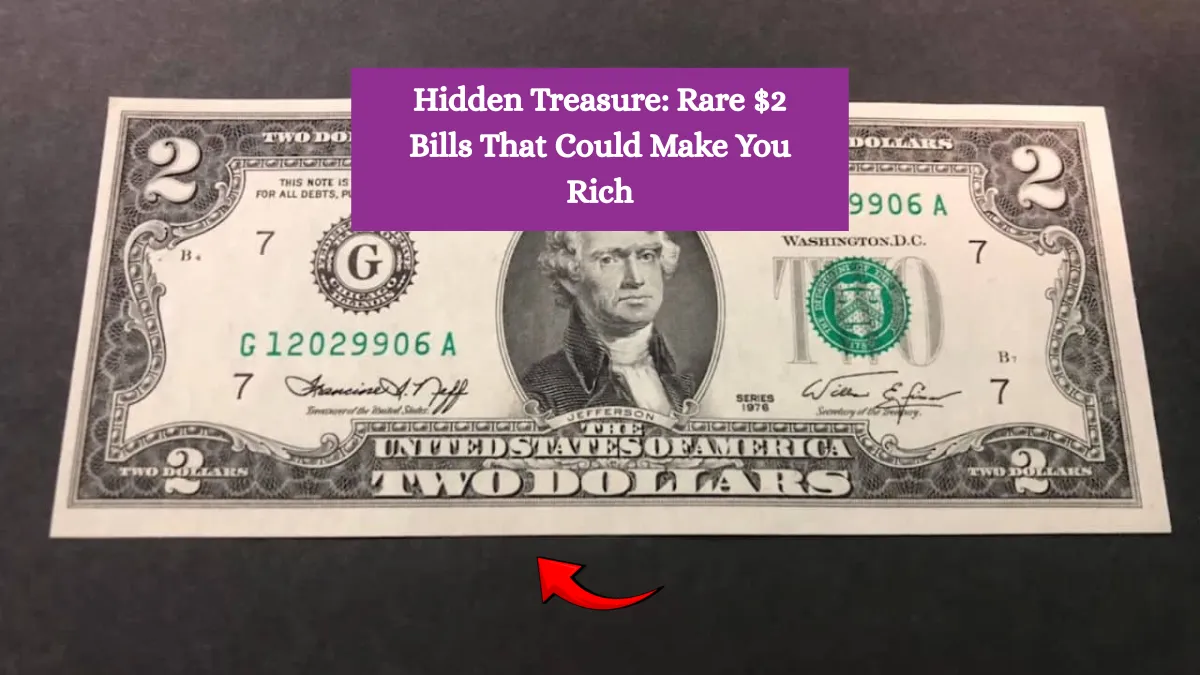When you think about valuable currency, your mind probably jumps to old gold coins or rare pennies. But what about the $2 bill—the often overlooked, rarely seen banknote that could be hiding in your wallet or tucked away in your home? Believe it or not, some rare $2 bills are worth far more than their face value, with certain examples fetching thousands or even tens of thousands of dollars from collectors.
If you’ve ever been handed a $2 bill and wondered whether it’s just an odd curiosity or a potential hidden treasure, this guide will help you identify the most valuable versions and explain how you could turn that humble note into a surprising payday.
Why Are $2 Bills So Special?
The $2 bill is a bit of a rarity in everyday cash circulation. Though still legal tender, most Americans rarely see them, and many mistakenly think they’re no longer produced. The $2 bill features Thomas Jefferson on the front and, since the 1976 series, the famous Signing of the Declaration of Independence on the back.
Because they’re less common and often collected, certain $2 bills have become sought-after collectibles—especially those with unique serial numbers, printing errors, or from rare production years.
The Most Valuable $2 Bills to Look Out For
1. 1928 $2 Legal Tender Notes
- These are the earliest series of $2 bills featuring Jefferson, printed on the larger-sized notes used before 1929.
- If you find a 1928 $2 note in good condition, it could be worth several hundred to a few thousand dollars.
- Variants with star (*) serial numbers or specific signatures increase value.
2. 1953 and 1963 $2 Silver Certificates
- These bills say “Silver Certificate” on the front and were redeemable for silver dollars.
- Especially valuable in uncirculated or crisp condition.
- Can fetch anywhere from $50 to $1,000+ depending on condition and rarity.
3. 1976 $2 Federal Reserve Notes – First Year of the New Design
- These notes were reissued as part of the U.S. Bicentennial celebration.
- Uncirculated or rare serial numbers (like very low or repeating digits) can push values above $100 to $500.
- Star notes and misprints from this series can be worth thousands.
4. Rare Serial Numbers
Collectors prize $2 bills with unique serial numbers, such as:
- Radar Numbers: Palindromes like 12344321
- Repeater Numbers: Patterns like 12121212
- Solid Numbers: All digits the same (e.g., 77777777)
- Ladder Numbers: Sequentially ascending or descending (e.g., 12345678)
Such bills can range from $50 to over $10,000 depending on rarity and condition.
5. Printing Errors and Misprints
Like coins, paper money sometimes has errors that make them extremely collectible:
- Mismatched serial numbers
- Misaligned prints or missing ink
- Folded notes that were printed on improperly
- Double printing or overprints
Some rare error $2 bills have sold for thousands of dollars at auction.
How to Identify If Your $2 Bill Is Valuable
Here’s a simple checklist to help you evaluate your $2 bill:
- Check the Series Year: Early notes like 1928 and 1953 are worth more.
- Look for “Star” Notes: These have a star at the end of the serial number and are replacements for damaged bills—rarer and more valuable.
- Inspect Condition: Crisp, uncirculated bills are worth far more than worn or torn ones.
- Examine Serial Numbers: Unique serial numbers can boost value.
- Look for Errors: Printing flaws can make a note a collector’s prize.
- Verify Authenticity: Use a black light or currency detector pen to avoid counterfeits.
Where to Sell Your Rare $2 Bills
If you discover a potentially valuable $2 bill, here are your best options to maximize your payout:
- Coin and currency dealers: Local shops often buy rare currency.
- Online auction sites: eBay and Heritage Auctions have active currency buyers.
- Currency shows and conventions: Meet serious collectors in person.
- Professional grading: Get your bill graded by PCGS Currency or PMG to increase value and buyer confidence.
Fun Fact: The $2 Bill and U.S. Culture
Despite their rarity, $2 bills are still in circulation, used in certain traditions or gifts. For example:
- Some casinos give $2 bills as good luck tokens.
- They’re sometimes used as a novelty for tipping or fundraising.
- Presidents like John F. Kennedy encouraged their use to reduce cash handling costs.
So even if your $2 bill isn’t worth a fortune, it’s still a fun and historic piece of America’s currency story.
Final Thoughts: Could Your $2 Bill Be a Hidden Treasure?
Next time you find a $2 bill, don’t just spend it without a second thought. Check its series, serial number, and condition. You might be holding a rare collectible worth hundreds or even thousands of dollars. And if you get lucky enough to own one of the ultra-rare notes, your $2 bill could turn into a life-changing windfall.
Happy hunting—and keep your eyes peeled for those hidden treasures in your wallet!
